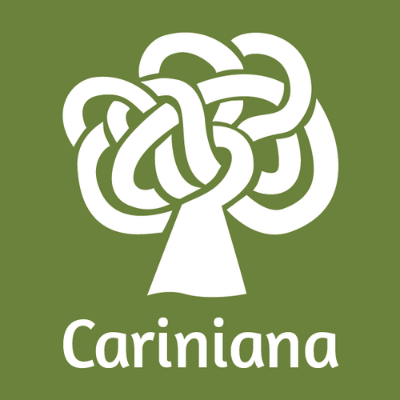A MINOR-DANCE IN A DANCE-CURRICULUM
DOI:
https://doi.org/10.15687/rec.v16i2.67279Keywords:
Minor-dance, Curriculum-dancing, LearnAbstract
This article shows how a dance-curriculum, created from experimentations with dance in the territory of a curriculum in action, reinvented itself and triggered other ways of learning by connecting with a minor-dance, the one that is in student bodies and it is often marginalized in the larger curriculum. Dancing was used as a methodology, that is: a composition made of cartography + dance and that is inspired both by the studies of Gilles Deleuze and Félix Guattari and by Nietzsche's “Walker” to bet on a dancing curriculum. The purpose of this article is to show how a dance-curriculum worked when connecting to a minor-dance in the territory of a curriculum, following some sounds of hip-hop culture, such as funk, trap dance and k-pop. This minor-dance, with sensitive teaching on the lookout for gaps to make the movement happen in the midst of authorized subjects taught in schools, made it possible to break, break and subvert the rules, the vision of the body and dance of a major-curriculum. The article also shows that, through this connection, students learn by following the dancing line of pleasure and joy. The argument developed is that a dancing-curriculum has become a space of transgression and creation by connecting to a minor-dance, enunciating bodies, dance and a curriculum to come.
Downloads
Metrics
References
BRASIL. Base Nacional Comum Curricular (BNCC). Educação é a Base. Brasília, MEC/CONSED/UNDIME, 2017. Disponível em: <http://basenacionalcomum.mec.gov.br/images/BNCC_EI_EF_110518_versaofinal_site.pdf >. Acesso em: 21 jun. 2023.
BRAZ, Matheus. O que é a trap dance? [Entrevista cedida a] Carla Char. Instagram: via direct. Contagem, 18 mar. 2019. 1 arquivo .mp3 (5 min.).
BRUM, Leonel B. Videodança: uma escrita cênica da dança. 2012. 181 p. Tese (Doutorado em Artes) – Programa de Pós-Graduação em Artes Visuais, Escola de Belas Artes, Universidade Federal do Rio de Janeiro, Rio de Janeiro, 2012.
CAMBI, Franco. História da Pedagogia. Tradução Álvaro Lorencini. São Paulo: Fundação Editora da UNESP, 1999.
CAMPOS, Camila A. Currículo com música: essa composição normaliza ou faz dançar? 2018. 155 p. Dissertação (Mestrado em Educação) – Programa de Pós-Graduação em Educação: Conhecimento e Inclusão Social, Faculdade de Educação, Universidade Federal de Minas Gerais, Belo Horizonte, 2018.
CASTRO, Edgardo. Leituras da modernidade educativa. Disciplina, biopolítica, ética. In: GONDRA, José; KOHAN, Walter (orgs.). Foucault 80 anos. Belo Horizonte: Autêntica, 2006.
CHAR, Carla. Dança e resistência e educação: por uma pedagogia dançante. Monografia. Faculdade de Educação. Universidade Federal de Minas Gerais, UFMG, Belo Horizonte, 2018. Disponível em: <https://www.academia.edu/44321204/dan%C3%A7a_e_resist%C3%AAncia_e_educa%C3%A7%C3%A3o_por_uma_pedagogia_dan%C3%A7ante>. Acesso em: 21 jun. 2023.
DELEUZE, Gilles. Conversações. Tradução Peter Pál Pelbart. 3. ed. Rio de Janeiro: Editora 34, 2013.
DELEUZE, Gilles; GUATTARI, Féliz. Kafka: por uma literatura menor. Tradução Júlio Castañon Guimarães. Rio de Janeiro: Imago Editora, 1977.
DELEUZE, Gilles; GUATTARI, Félix. Mil Platôs: capitalismo e esquizofrenia 2, v. 4. Tradução Suely Rolnik. 2. ed. São Paulo: Editora 34, 2012a.
DELEUZE, Gilles; GUATTARI, Félix. Mil Platôs: capitalismo e esquizofrenia 2, v. 5. Tradução Peter Pál Pelbart e Janice Caiafa. 2. ed. São Paulo: Editora 34, 2012b.
DELEUZE, Gilles; PARNET, Claire. Diálogos. Tradução Eloisa Araújo Ribeiro. São Paulo: Escuta, 1998.
FORNACIARI, Christina. Tentativas atrevidas: o funk na arte-educação. In: FORNACIARI, Christina (org.). Corpo em contexto. Belo Horizonte: Scriptum, 2014.
FOUCAULT, Michel. O corpo utópico, as heterotopias. São Paulo: N-1 Edições. 2013.
LEPECKI, André. Coreopolítica e coreopolícia. ILHA, v. 13, n. 1, p. 41-60, jan.-jun. 2012. Disponível em: <http://dx.doi.org/10.5007/2175-8034.2011v13n1-2p41>. Acesso em: 21 jun. 2023.
LIE, John. What Is the K in K-pop? South Korean Popular Music, the Culture Industry, and National Identity. Korea Observer, v. 43, n. 3, p. 339-363, Autumn 2012. Disponível em: <https://www.tobiashubinette.se/hallyu_1.pdf>. Acesso em: 21 jun. 20203.
LOPES, Adriana C. Funk-se quem quiser: no batidão negro da cidade carioca. 1. ed. Rio de Janeiro: Bom Texto; FAPERJ, 2011.
OLIVEIRA, Danilo Araujo de; FERRARI, Anderson; CHAR, Carla. “A história que a história não conta”: heterotopias de um samba-enredo no currículo. Revista e-Curriculum, São Paulo, v. 19, n. 2, p. 634-658, abr./jun. 2021.
PARAISO, Marlucy Alves. O “coração” da escola... Um território disputado. In: PARAISO, Marlucy Alves. Currículos: teorias e políticas. São Paulo: Contexto, 2023, p. 7-19.
RIBEIRO, Ana Cristina; CARDOSO, Ricardo. Dança de rua. Campinas: Editora Átomo, 2011.
SILVA, Ana Cristina R. Dança de rua: do ser competitivo ao artista da cena. 2014. 269 f. Dissertação, (Mestrado em Artes da Cena) – Teatro, Dança, Performance, Universidade Estadual de Campinas, Campinas, 2014.
VIANNA, Klauss. A Dança. Em colaboração com Marco Antonio de Carvalho. 8. edição. São Paulo: Summus, 2018.
YUKA, Marcelo. Muitos falam, pouco conhecem. E o que fazem? In: LEAL, Sérgio José de Machado. Acorda hip-hop!: despertando um movimento em transformação. Rio de Janeiro: Aeroplano, 2007. Disponível em: <https://issuu.com/tramas.urbanas/docs/acorda_hip_hop>. Acesso em: 21 jun. 2023.
Downloads
Published
How to Cite
Issue
Section
License
Copyright (c) 2023 Curriculum Space Journal

This work is licensed under a Creative Commons Attribution 4.0 International License.
By submitting an article to Curriculum Space Journal (CSJ) and having it approved, the authors agree to assign, without remuneration, the following rights to Curriculum Space Journal: first publication rights and permission for CSJ to redistribute this article. article and its metadata to the indexing and reference services that its editors deem appropriate.
















